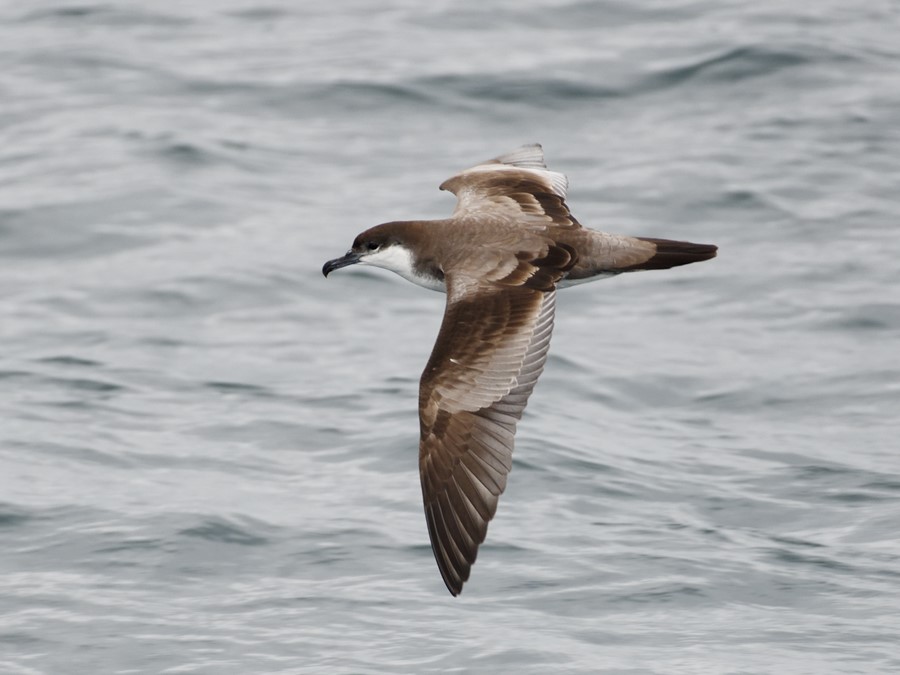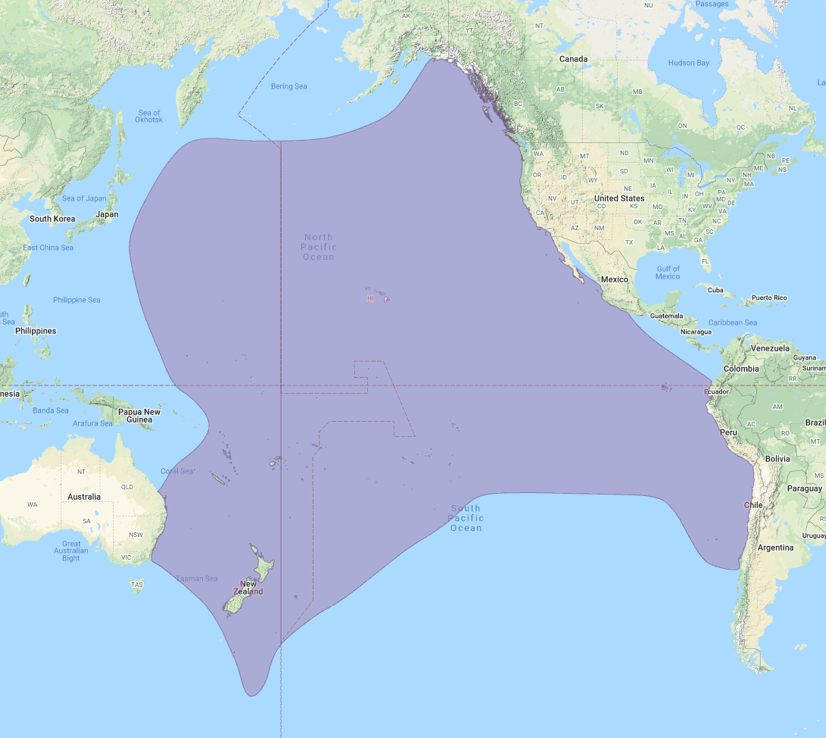Birdfinding.info ⇒ Common throughout New Zealand waters from October to May—when it is locally abundant near its colonies on the Poor Knights Islands. Also regularly seen on pelagic trips out of southeastern Australian ports, such as Eaglehawk Neck, Tasmania. Readily found in Japanese waters during June and July, and on pelagic trips out of West Coast ports from British Columbia to California mainly between late August and mid-October. Uncommon but regular in Hawaii from March to October.
Buller’s Shearwater
Ardenna bulleri
Breeds on the Poor Knights Islands of New Zealand, and ranges nearly throughout the Pacific Ocean.
Breeding. Breeds from October to May, nesting in burrows in colonies on the main Poor Knights, Aorangi and Tawhiti Rahi, and also on five small adjacent islets. Attends nocturnally.
During the breeding season it forages throughout New Zealand waters and east to the Chatham Islands and beyond.
Nonbreeding. Outside the breeding season, most Buller’s Shearwaters take a coordinated tour of the Pacific Ocean, traveling in tight, sociable flocks.
From March to May, most of the population migrates east to the south-central and southeastern Pacific, then northwest through the central Pacific to the waters east of Japan, where most remain until July to molt. A small portion of the post-breeding migrants go straight to the northeastern Pacific and molt in North American instead of Japanese waters.
In August the bulk of the population heads east across the North Pacific, with some portion arriving in the Gulf of Alaska and others at the latitudes of British Columbia, Washington, and Oregon.
In September and October the bulk shifts to California waters then departs southwest to New Zealand. A small portion of the population instead migrates southeast to the Humboldt Current off of Peru and Chile.
A few stragglers (presumably first-year birds) remain in the North Pacific during the breeding season, so it occurs there at least in small numbers year-round.
There is a single, extraordinary record from the North Atlantic Ocean: an individual seen and photographed by many observers on a pelagic trip 30 miles east-southeast of Barnegat Light, New Jersey, on October 28, 1984.

Buller’s Shearwaters in colony. (Aorangi Island, Poor Knights Islands, New Zealand; December 2011.) © Alan Tennyson
Identification
A medium-large, long-tailed, broad-winged, boldly patterned shearwater.
The upperparts are several shades of gray with a pronounced dark “M” pattern accentuated by pale shoulders and secondary panels.
The back and rump are pale- to medium-gray. The tail is black, and the crown and nape are dark-gray or blackish.
The underparts are all-white, except that the tail is black and the wings have thin blackish borders.
The bill is mostly pale-gray with a blackish tip, and the legs and feet are a variable mixture of pink and gray.

Buller’s Shearwater, showing characteristically bold upperparts pattern. (Offshore from Eaglehawk Neck, Tasmania, Australia; February 3, 2018.) © Robert Hamilton
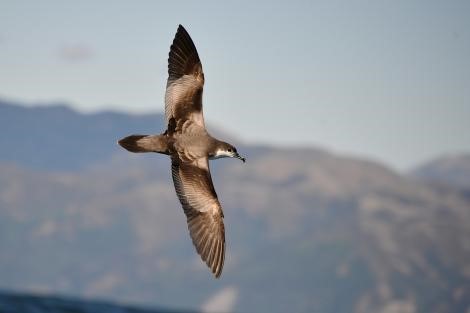
Buller’s Shearwater. (Offshore from Kaikoura, South Island, New Zealand; January 2013.) © Brian Anderson

Buller’s Shearwater, showing characteristically bold upperparts pattern. (Offshore from Tofino, British Columbia; October 21, 2018.) © Ilya Povalyaev

Buller’s Shearwater, showing characteristically bold upperparts pattern. (Offshore from Tofino, British Columbia; September 7, 2019.) © David M. Bell
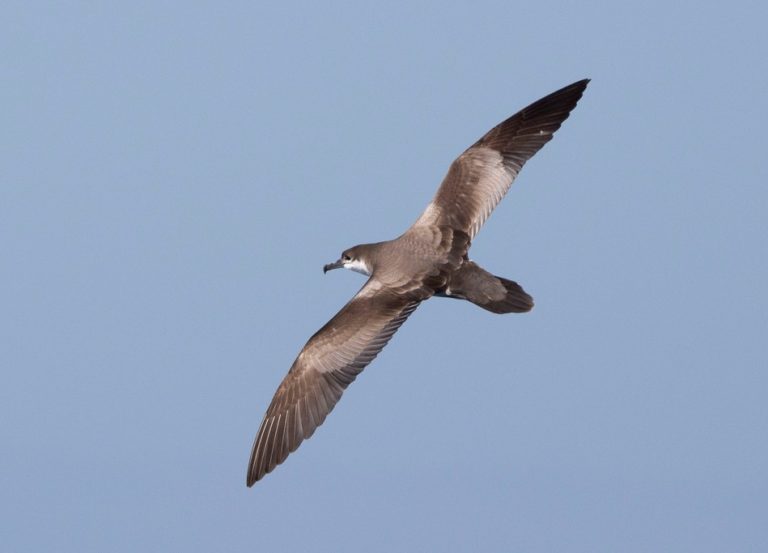
Buller’s Shearwater. (Hauraki Gulf, New Zealand; December 12, 2020.) © Oscar Thomas
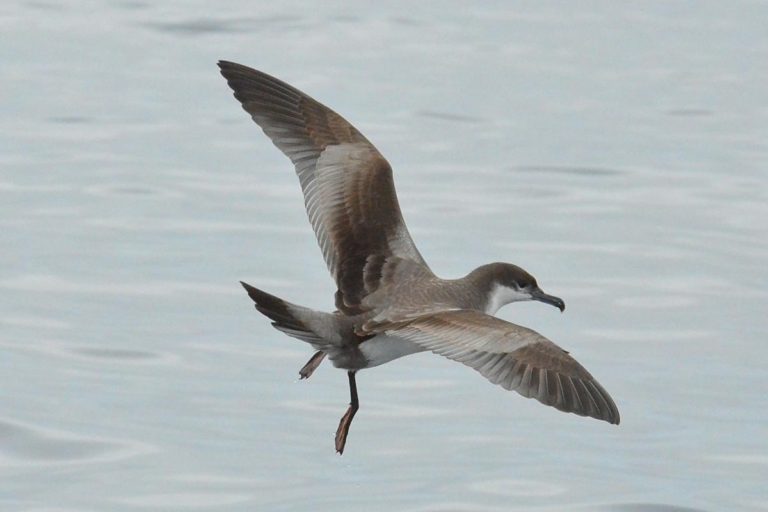
Buller’s Shearwater. (Offshore east of Stephensons Island, North Island, New Zealand; December 2012.) © Phil Palmer
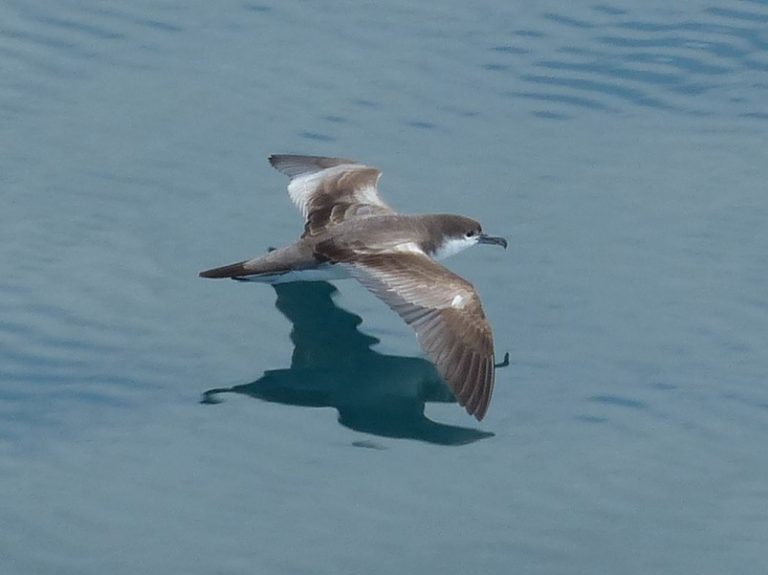
Buller’s Shearwater. (Hauraki Gulf, New Zealand; February 5, 2014.) © chrisc

Buller’s Shearwater. (Offshore north of North Island, New Zealand; March 17, 2019.) © Hiroyuki & Shoko Tanoi
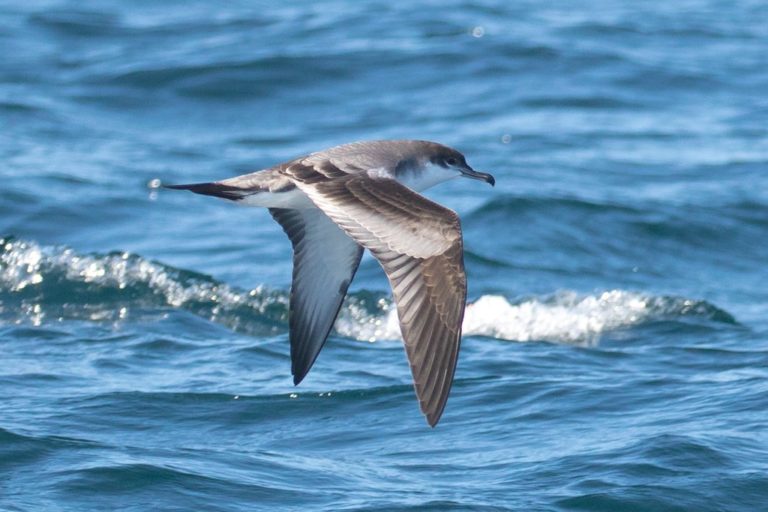
Buller’s Shearwater. (Offshore from Tofino, British Columbia; September 3, 2017.) © John D. Reynolds

Buller’s Shearwater. (Offshore from Monterey, California; August 27, 2017.) © Brian Sullivan

Buller’s Shearwater. (Hauraki Gulf, New Zealand; March 14, 2019.) © Hiroyuki & Shoko Tanoi

Buller’s Shearwater. (Hauraki Gulf, New Zealand; January 2014.) © Alexander Viduetsky
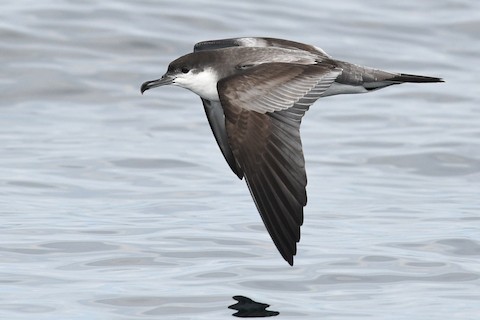
Buller’s Shearwater. (Offshore from Tofino, British Columbia; September 7, 2019.) © David M. Bell

Buller’s Shearwater. (Offshore from Tofino, British Columbia; September 7, 2019.) © David M. Bell

Buller’s Shearwater. (Offshore from Tofino, British Columbia; September 7, 2019.) © David M. Bell

Buller’s Shearwater. (Offshore from Kaikoura, South Island, New Zealand; December 6, 2015.) © Brendan Klick
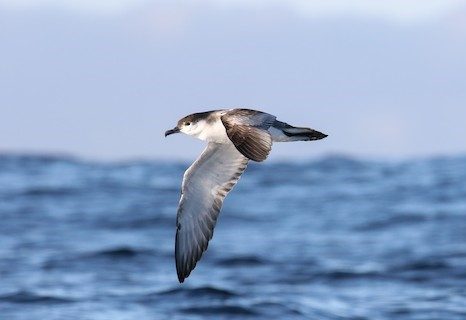
Buller’s Shearwater. (Offshore from Tofino, British Columbia; October 21, 2018.) © Blair Dudeck
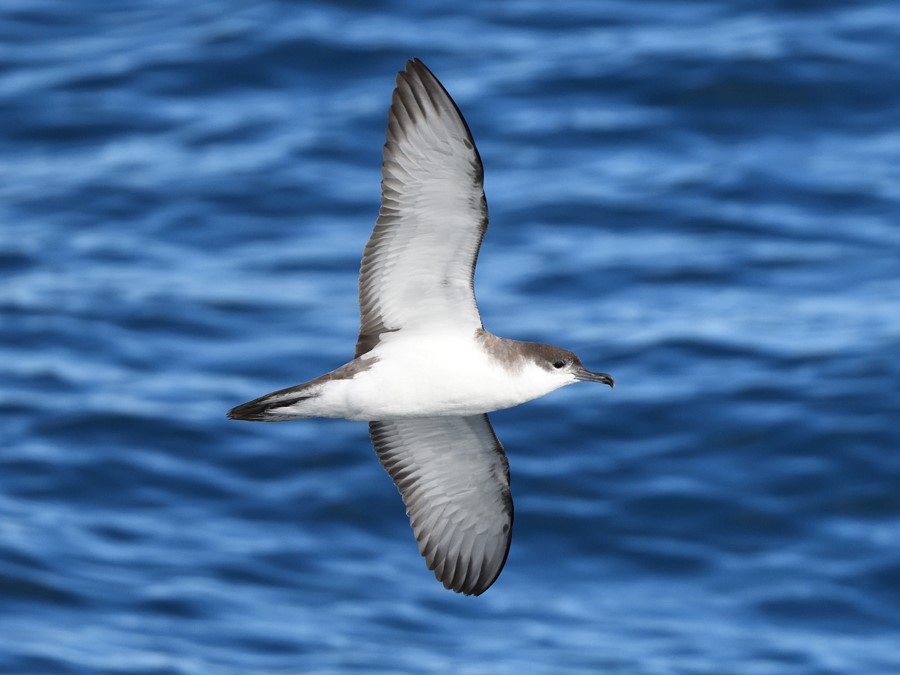
Buller’s Shearwater. (Offshore north of North Island, New Zealand; March 17, 2019.) © Hiroyuki & Shoko Tanoi
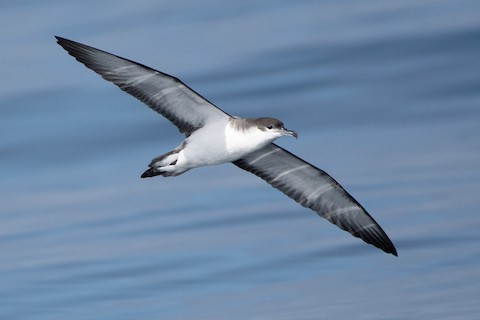
Buller’s Shearwater. (Offshore from Bodega Bay, California; August 25, 2019.) © Darren Clark

Buller’s Shearwater. (Offshore from Westport, Washington; September 29, 2019.) © Darren Clark

Buller’s Shearwater. (Offshore from Tofino, British Columbia; September 7, 2019.) © David M. Bell

Buller’s Shearwater. (Offshore from San Diego, California; June 14, 2015.) © B.J. Stacey

Buller’s Shearwater. (Offshore from Kaikoura, South Island, New Zealand; December 6, 2015.) © Brendan Klick
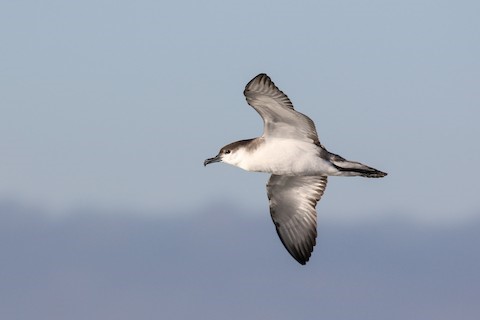
Buller’s Shearwater. (Offshore from Tofino, British Columbia; October 21, 2018.) © Blair Dudeck

Buller’s Shearwater. (Hauraki Gulf, New Zealand; February 15, 2018.) © Cameron Eckert

Buller’s Shearwater. (Offshore from Tofino, British Columbia; September 7, 2019.) © David M. Bell

Buller’s Shearwater. (Cordell Bank, California; August 31, 2013.) © Caroline Lambert

Buller’s Shearwater. (Offshore from San Diego, California; September 19, 2020.) © Andrew Newmark

Buller’s Shearwater. (Offshore from Pescadero, California; August 18, 2018.) © Brian Sullivan
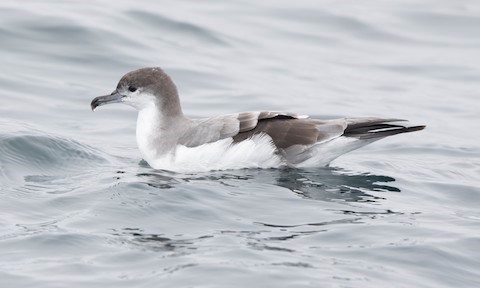
Buller’s Shearwater. (Offshore from Pescadero, California; August 18, 2018.) © Steve Kelling

Buller’s Shearwater. (Poor Knights Islands, New Zealand; March 2014.) © Malcolm Pullman

Buller’s Shearwater. (Offshore from the Poor Knights Islands, New Zealand; September 24, 2017.) © Oscar Thomas

Buller’s Shearwater. (Offshore from Pescadero, California; August 18, 2018.) © Brian Sullivan

Buller’s Shearwater in colony. (Aorangi Island, Poor Knights Islands, New Zealand; December 2011.) © Graeme Taylor
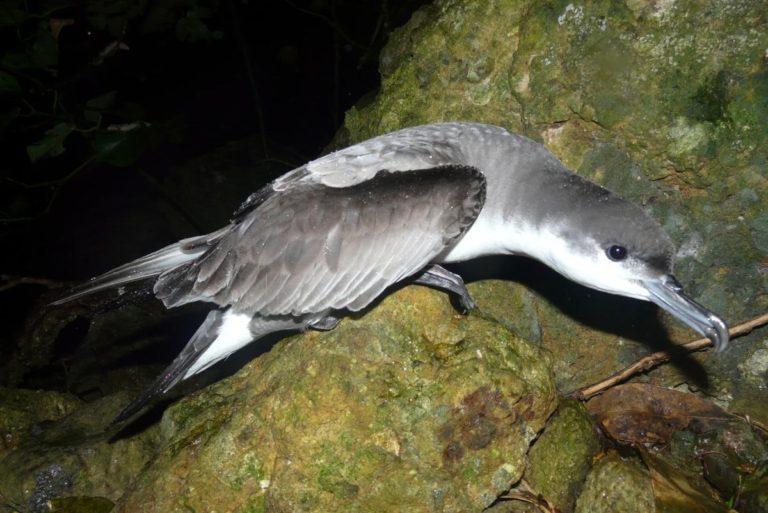
Buller’s Shearwater in colony. (Aorangi Island, Poor Knights Islands, New Zealand; December 2011.) © Alan Tennyson
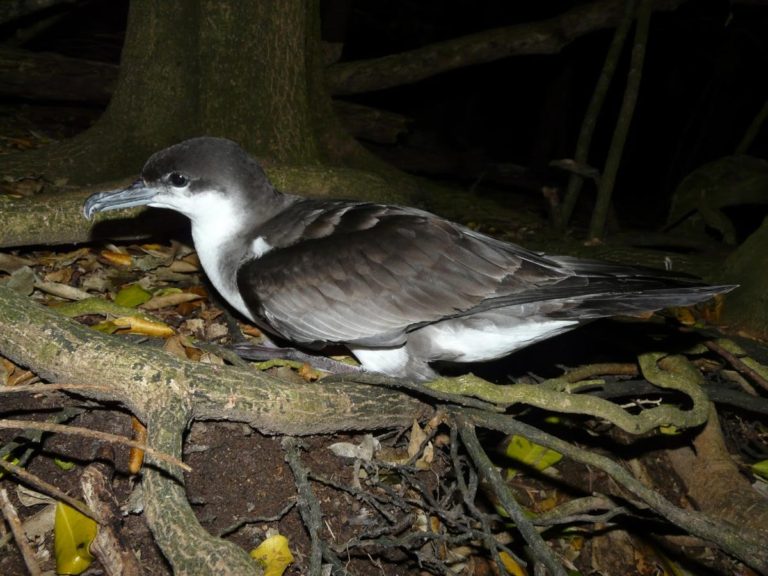
Buller’s Shearwater in colony. (Aorangi Island, Poor Knights Islands, New Zealand; December 2011.) © Alan Tennyson
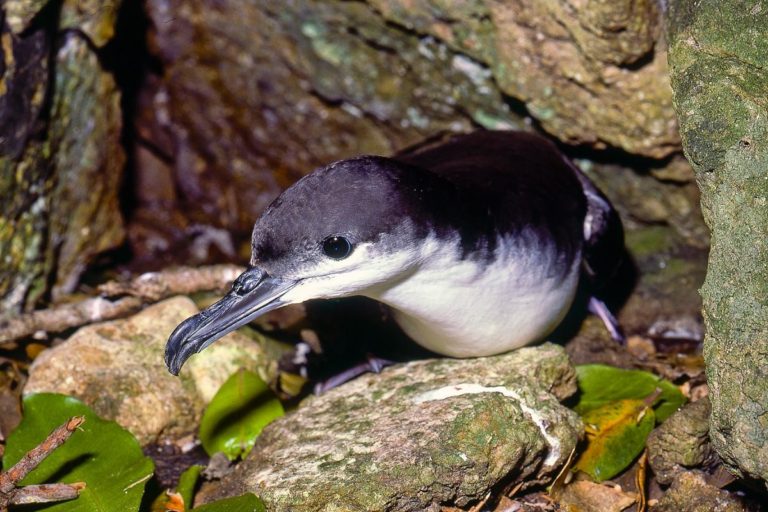
Buller’s Shearwater at burrow entrance. (Poor Knights Islands, New Zealand; November 1977.) © Albert Aanensen
Cf. Wedge-tailed Shearwater. Buller’s and Wedge-tailed Shearwaters are similarly proportioned, with approximately the same measurements, thin bills, and wedge-shaped tails. Buller’s is distinctively patterned above and gleaming white below, so it is rarely misidentified. However, some pale morph Wedge-tailed have approximately the same pattern as Buller’s on their upperparts—not as bold, but similar enough for confusion. In such cases, the underwing patterns are more reliable for identification: essentially all-white on Buller’s versus white-centered with dark edges and broad dark tips on Wedge-tailed.
Cf. Streaked Shearwater. Streaked Shearwater can have approximately the same plumage color and pattern as Buller’s, although it tends to be much less crisply defined. Streaked differs most noticeably in having white on the face and forehead, a mostly pale bill, and more extensively dark underwings.
Notes
Monotypic species.
IUCN Red List Status: Vulnerable.
References
Alderfer, J., and J.L. Dunn. 2014. National Geographic Complete Birds of North America (Second Edition). National Geographic Society, Washington, D.C.
BirdLife International. 2018. Ardenna bulleri. The IUCN Red List of Threatened Species 2018: e.T22698182A132632044. https://dx.doi.org/10.2305/IUCN.UK.2018-2.RLTS.T22698182A132632044.en. (Accessed February 12, 2021.)
Brazil, M. 2009. Birds of East Asia. Princeton University Press.
Brooke, M. 2004. Albatrosses and Petrels across the World. Oxford University Press.
eBird. 2021. eBird: An online database of bird distribution and abundance. Cornell Lab of Ornithology, Ithaca, N.Y. http://www.ebird.org. (Accessed February 12, 2021.)
Harrison, P. 1983. Seabirds: An Identification Guide. Houghton Mifflin, Boston.
Howell, S.N.G. 2012. Petrels, Albatrosses & Storm-Petrels of North America. Princeton University Press.
Howell, S.N.G., and K. Zufelt. 2019. Oceanic Birds of the World. Princeton University Press.
Onley, D., and P. Scofield. 2007. Albatrosses, Petrels & Shearwaters of the World. Princeton University Press.
Pratt, H.D., P.L. Bruner, and D.G. Berrett. 1987. A Field Guide to the Birds of Hawaii and the Tropical Pacific. Princeton University Press.
Pyle, R.L., and P. Pyle. 2017. The Birds of the Hawaiian Islands: Occurrence, History, Distribution, and Status. Version 2 (January 1, 2017). http://hbs.bishopmuseum.org/birds/rlp-monograph/. B.P. Bishop Museum, Honolulu, Hawaii.
Seabirding of Japan. 2021. Buller’s Shearwater. http://seabirding-japan.com/bullers-shearwater/. (Accessed February 12, 2021.)
Sibley, D.A. 2000. The Sibley Guide to Birds. Alfred A. Knopf. New York.
Taylor, G.A. 2013. Buller’s shearwater. In New Zealand Birds Online (Miskelly, C.M., ed.). http://nzbirdsonline.org.nz/?q=node/197. (Accessed February 12, 2021.)
